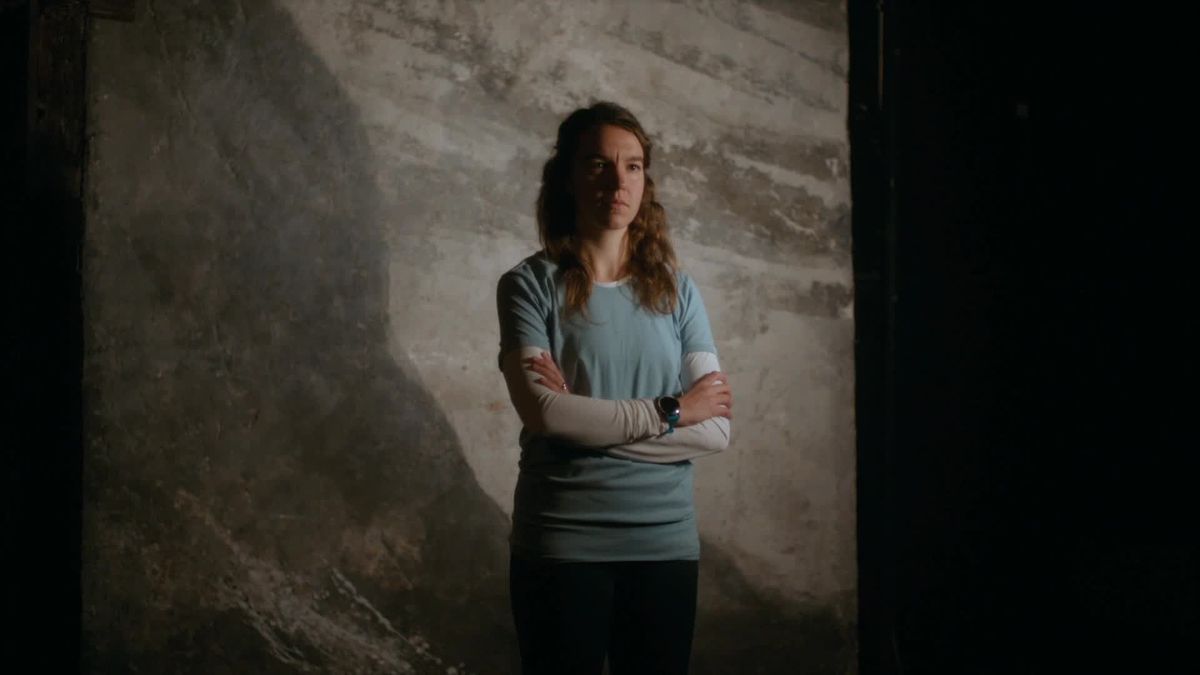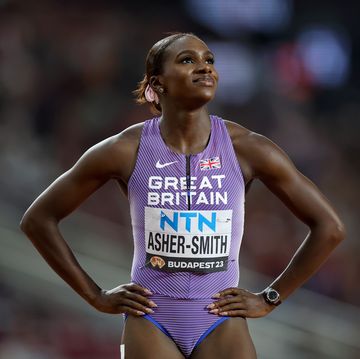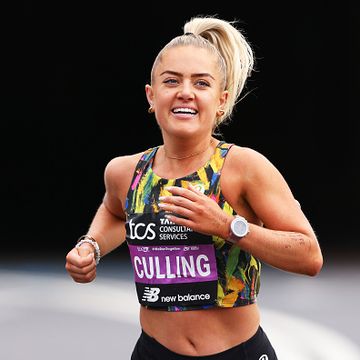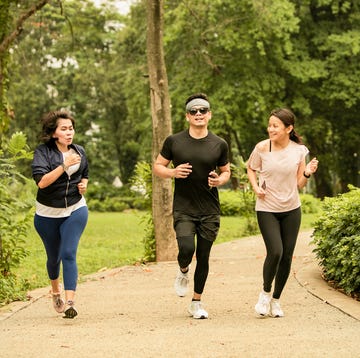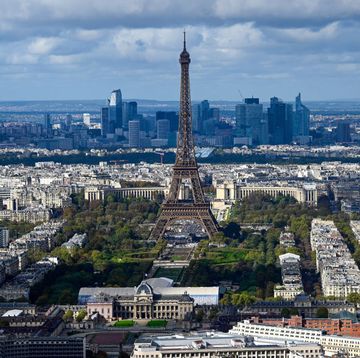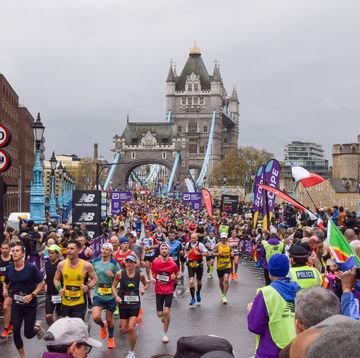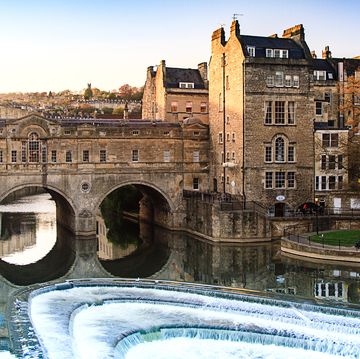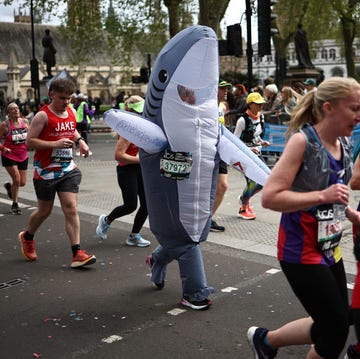The Western States 100 – the world’s oldest 100-mile footrace, otherwise simply known as Western States – has come to represent one of the toughest tests of endurance on the planet. Traversing the Sierra Nevada Mountains in the US state of California and featuring a climb of more than 5,000m, it's the race that has made household names of Jim Walmsley, Scott Jurek and Ann Transon.
Last year, British endurance athlete Tom Evans won the race in an astonishing 14:40:22, which was the fourth-fastest time clocked in the event's history. Meanwhile, Courtney Dauwalter set the new female course record of 15:29:33, winning the race for the second time and securing a historic treble by becoming the first person – male or female – to win Western States, Hardrock and UTMB in a single calendar year.
Western States, which began as a horse riding event in 1955, has seen many multi-time champions. Ann Transon has the highest number of wins, having racked up 14 victories at the race from 1989 to 2003. Scott Jurek holds the most wins in the men's competition, having finished first for seven consecutive years from 1999.
British ultra runner Beth Pascall was female champion in 2021, finishing in 17:10:42. At the time, this was the second-fastest women's finish in a 100-mile race in history.
The history
The unique history of this event is a big part of its longevity and charm. It all began in 1955, when five horsemen attempted to ride the Western States Trail to prove that horses could cover 100 miles in one day. Then becoming known as the Tevis Cup, it wasn't until 1972 that the route was first attempted on foot by a group of 20 infantry soldiers, who attempted to hike the trail nonstop. The soldiers started one day ahead of the Tevis Cup ride, with seven going on to complete the distance on foot in under 48 hours.
Two years later, Tevis veteran Gordy Ainsleigh decided to join the horses of the Western States Trail Ride to see if he could complete the course on foot within the cut-off time of 24 hours. He completed it in 24 hours and 42 minutes and the gauntlet was thrown. Over the next three years, two more runners attempted to run the route before the official Western States Endurance Run was founded in 1977.
In 1979, 143 runners from 21 US states and three foreign countries attempted the course – and the next four decades saw interest continue to grow, with demand far exceeding the 369 entrants allowed each year.
Today, athletes from across the globe arrive in California on the last weekend in June to share the experience of running Western States. In 2024, the event will start on 29 June.
What is the Western States route?
The route follows the Western States Trail in California, which starts at Olympic Valley and ends in Auburn. Beginning at 5am on Saturday morning, runners must reach the finish line no later than 10:59:59am the following day in order to be eligible for an award.
The trail ascends from the valley floor in the Olympic Valley to Emigrant Pass, which involves a climb of 777m in the first 4.5 miles. From the pass – following the original trails used by the gold and silver miners of the 1850s – runners then travel west, climbing another 4,700m. While the climbs are tough the descents are even tougher, as runners must then move down 7,000m before reaching the finish line in Auburn, situated in the heart of California’s gold country.
Most of the trail passes through remote and rugged territory which is only accessible by foot, horse of helicopter. Temperatures on the course can rise to a heady 35°C, too, so this is not a race for cold weather runners.
That said, support at the race is unparalleled, with a ratio of four volunteers for every runner – and the river crossing alone has a team of 125 personnel. There are also 20 aid stations along the course, including 10 medical checkpoints, which are well stocked with fluids and a variety of foods.
Why do finishers receive buckles?
Most 100-mile races in the UK and the US award finishers with a buckle rather than a medal – a tradition that stems back to ultramarathon running's shared history with endurance horse races. Western States awards a sub-24-hour silver belt buckle and a sub-30-hour bronze belt buckle to finishers, depending on their time.
What is the entry process?
With just 369 places available each year, Western States is one of the toughest races to get into. Runners can enter via a ballot if they have completed a qualifying race, with qualifying races in the UK being the Arc of Attrition, Centurion Autumn 100, Hardwolds 80-miler, Lakeland 100, North Downs Way 100, South Downs Way 100 and the Thames Path 100. A further 50 to 75 applicants in the ballot are placed on the general wait list.
Runners can also be automatically selected and not subject to the ballot. These include the top 10 finishers from the previous year’ race and 28 people who have won top three positions in Golden Ticket Races such as Black Canyon 100K.
The race has a full pregnancy deferral policy, too, which offers those eligible automatic entry into an subsequent race with no timeframe limit.
How do runners get to the start line?
Runners start arriving earlier in the week, as the event kicks off with a shakeout run on the Thursday, two days before race day. Although the pre-race events are not mandatory, the briefing is – and this takes place at 2pm on the Friday.
If you're one of the 369 runners to get a place in the event, please note that the closest airports to fly into are Reno (50 miles from Olympic Valley), Sacramento, (100 miles from Olympic Valley) and San Francisco (200 miles from Olympic Valley). There is plenty of accommodation near the start line in Olympic Valley, as it is the home of Palisades Tahoe ski resort. There are also places to stay in nearby Truckee and Tahoe City.
While parking is available in Olympic Valley, remember that the route finishes in a different place to where it starts, so you'll need to work out how to get back to your car or accommodation at the end of your 100 miles – especially since the race doesn't offer a shuttle service back to the start. Usually, after the awards ceremony, there are lots of people heading back to Olympic Valley who are more than happy to give others a ride. There are also plenty of Uber and Lyft vehicles for hire in the area.
Is there a race cut-off time?
Yes – runners must finish within the 30-hour cut-off time to be included as an official finisher of the race.
For more information about the race, visit the Western States website.




